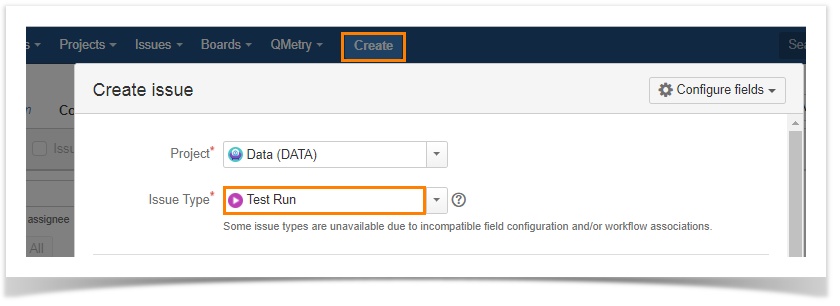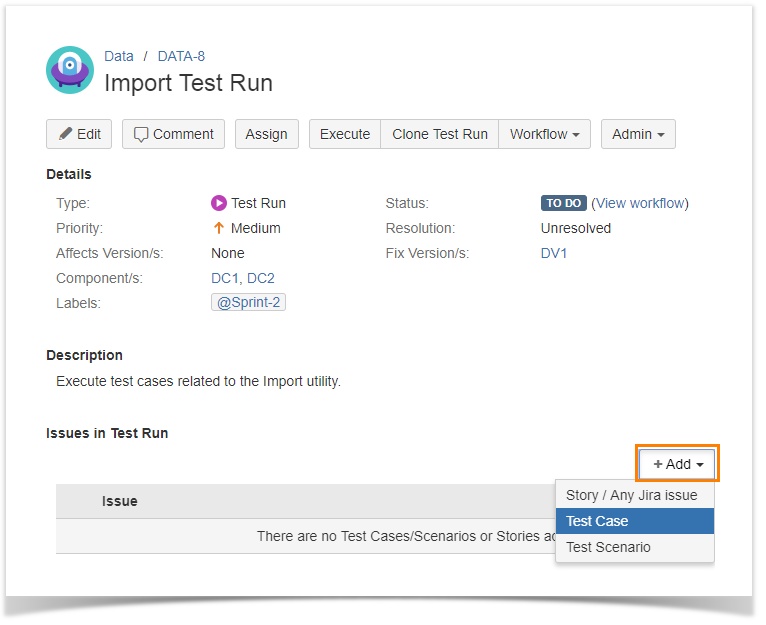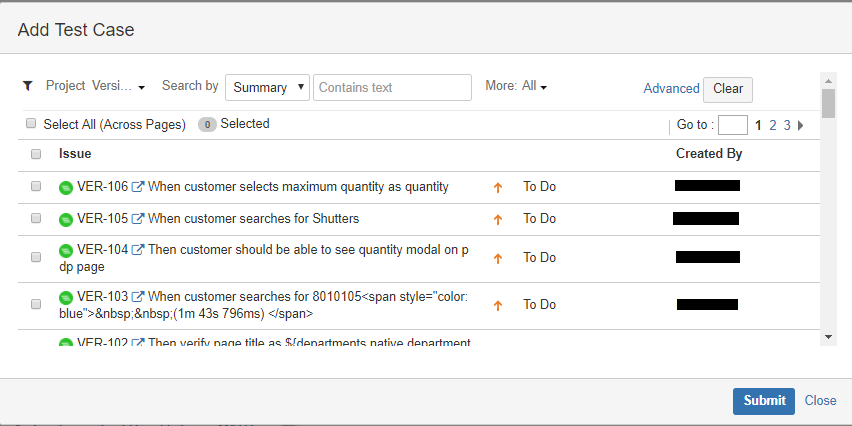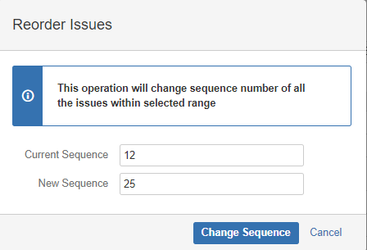Back to QMetry All Products Help Page
Create Test Runs
Table of Contents
The Test Run creation flow is improved to ease the process of creating test runs. The Test Run screen is revamped to accommodate UI changes and feature improvements.
Where to find the feature?
You can create Test Run through either of the following ways:
A. Click QMetry on the top navigation bar and click Create Test Run.
It opens the next screen with two columns, the left column of which comprises of the list of stories, test cases and test scenarios.
B. Click on the Create button of JIRA on the top navigation bar.
Select “Test Run” as Issue Type and add test run related details.
Once the issue is created, open it to associate Issues (i.e. stories/test cases/test scenarios) with it.
Add Issues to Test Run
Users can add Story, Test Case, and Test Scenario to the test run from the test run details page itself. The Add Stories/ Add Test Cases / Add Test Scenarios pop-up does not display the stories/issues/test cases/test scenarios which are already linked to the test run. It helps users narrow down the search of issues which are yet to be linked to the test run.
Open the test run detail page.
Go to the Issues in Test Run section.
Open the Add drop-down and select the required issue type to link with the test run.
- Story / Any Jira Issue: Selected stories / issues will be added to the test run. Already linked issues will not display while linking issues with Story and Test Run.
- Test Case: Selected test cases will be added to the test run. Already linked test cases will not display while linking test cases with Story and Test Run.
- Test Scenario: Selected test scenarios will be added to the test run. Already linked test scenarios will not display while linking test scenarios with Story and Test Run.
You can link test cases/stories/issues/test scenarios directly to the test run. Else, link either story or test scenario to the test run. On the Execution Screen, you will execute test cases associated with the respective story/test scenario.
Search Issues to Link with Test Run
The next screen displays list of stories/test cases/test scenarios in accordance with the Add option selected on the Test Run detail page.
Users can select multiple Projects on the list to view stories/test scenarios/test cases from across projects and add them to the test run.
If the story/test case/test scenario list is long, apply filters to the list. You can filter records through Basic Search and Advanced Search.
Basic Search
- Summary
- Issue Key
- Priority
- Status
Advanced Search
Apply JQL search if you know the specific values of filters. Read more on Advanced Search.
Select All (Across Pages): Select the check box to select all the issues across pages to link in one go. All the issues on all the pages will get selected instead of only current page.
Note: You can add maximum 1000 issues to at a time.
Select the issues and click on the Submit button to add them to the test run. You are navigated back to the test run detail page, which displays the issues linked to the test run.
You are navigated back to the test run detail page, which displays the issues linked to the test run.
A. Execute: The button becomes visible as soon as the issues are added to the test run. You can navigate to the Execution Screen directly by clicking on the Execute button.
B. Bulk Remove: The button becomes visible as soon as the issues are added to the test run. To remove multiple issues at a time,
B1. Click on the Bulk Remove button.
B2. Select check boxes of issues you want to delete and click on the Apply button. The selected issues are removed.
B3. After selecting issues to delete, if you change your mind and click Cancel to view the grid in normal mode.
C. You can change the order of linked issues by dragging and dropping the issues.
D. This feature is added to change order of issues across pages by mentioning sequence number.
E. Pagination: Pagination allows users to navigate through pages. Enter page number in the box and press the ENTER key of keyboard to jump on to a specific page.
Back to QMetry All Products Help Page




